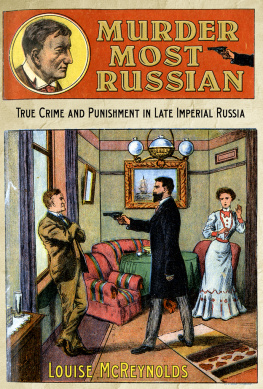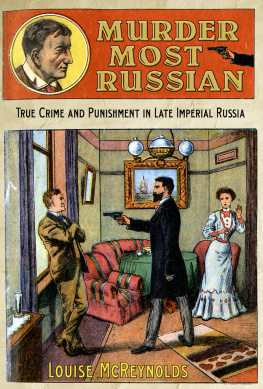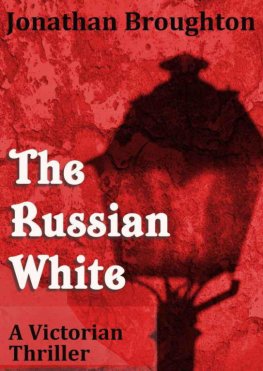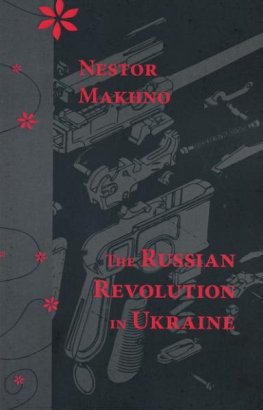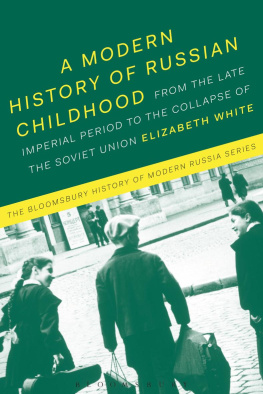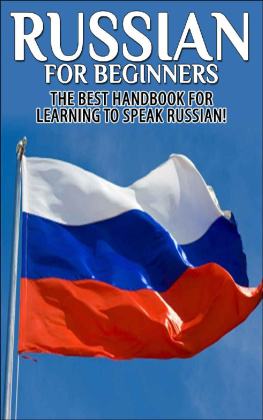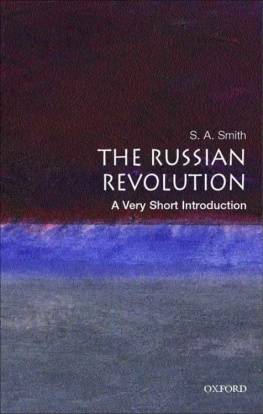ACKNOWLEDGMENTS
The debts that I have collected writing this book will be a pleasure to repay. Don Raleigh has always been there for me, critiquing the drafts in ways that improve my scholarship and sharing the easy with the hard times, life lived to its fullest. Joan Neuberger bounces around ideas and laughs that help to keep me sharp. In St. Petersburg, Tania Pavlenko and Tania Chernetskaia enrich my life more than they can imagine, and I appreciate conversations with Liuda Katenina, even though they must now be long distance. I am particularly beholden to the friends who took time from their own work to read and comment on mine: Marko Dumani, Robert Edelman, Beth Holmgren, Lynn Mally, Mark Steinberg, and Robert Weinberg. Though I remain responsible for the end product, their input made it a much better book. The line between colleague and friend is too narrow to be drawn, and I deeply appreciate the many ways that the following have been there for me: Boris Ananich, Laurie Bernstein, Steve Bittner, Pam Chew, Boris Kolonitskii, Dan Orlovsky, Ethan Pollock, Mark Sidell, Nancy Brave Solomon, and Bonnie Teel. My sister Rebecca was always so generous with her murder mysteries before she went digital, but we still share so much else. My sister Alice and I have enjoyed many a murder at the movies together. And I mourn the loss of those who began this project with me but departed before I could see it through: Alexander Fursenko, Janie Roden, Richard Stites, and Reggie Zelnik.
I am especially grateful for the institutional support that gave me the time to research and to write. I begin with the Fulbright-Hays Committee, which funded six months in Russia, and add the International Research and Exchanges Board (IREX), the Kennan Institute, and the University Research Council at the University of North Carolina, which provided for shorter trips. A year at the Institute for Advance Study at Princeton gave me the time to read through my copious materials, and a semester at UNCs Institute for the Arts and Humanities allowed me to begin writing. Generous funding from the John S. Guggenheim Foundation and the National Endowment for the Humanities gave me a year to complete the writing and revisions. In St. Petersburg, I have long depended on the professionalism of staff at the Saltykov-Shchedrin Library, complemented by the help I received from Nadia Zilper at the Davis Library in Chapel Hill. I thank Fred Stipe in particular for his help with the illustrations, and Jacqueline Solis for her detective work ferreting out sources. At Cornell University Press, I thank Mary Petrusewicz for her careful copyediting, Karen Laun for the skill with which she guided this book through production, and am again grateful to be working with John Ackerman, whose sense of humor remains as sharp as his editing pen.
My deepest appreciation lies with my sister Betsy. Our road together to murder began in West Hollywood on Poinsettia Drive, during those lazy summer evenings with burgers on the grill, margaritas in the blender, and Police Woman on channel 9. We still laugh about watching Dragnet in Oakland, sitting on the floor because my couch had no springs. Our brush with true crime came while cheering for the Knicks in the 1994 NBA finals, coverage interrupted by the police chase of O. J. Simpson in that infamous white Bronco. We have enjoyed so much together, from Caesars Palace to St. Petersburg, that a catalog of our misadventures would read longer than this book. To quote our mutual friend Tania, Betsy is a remarkable person. You are fortunate to have her in your life. I am indeed.
CHAPTER ONE
LAW AND ORDER
The main point of every criminal trial is to discover every detail of the absolute truth.
Notes from the men who reformed the legal code, 1864.
What is law in the books is largely determined by history. What is law in action is chiefly determined by public opinion.
Roscoe Pound, Dean of Harvard Law School, 1930.
Drunken neer-do-well Alexei Volokhov was last seen about 2 a.m. on August 17, 1866, lurching along the streets of the Sadovskaia settlement not far from Moscow with another fellow in similar condition. Five days later his brother Terentyi found Alexeis corpse in the cellar of the latters house, chopped in two, the upper half stuffed into a bag. The pieces of the torso lay partially covered with rocks under the muddy water that had flooded the space. Suspicion fell quickly upon his wife, Mavra, known to be unhappy in her marriage vocally. Their five-year-old son Grigorii told an investigator that he had seen his mother hacking his father, though the axe that he identified had no blade. Other than the boys somewhat specious eyewitness testimony, the best evidence against her was circumstantial, based on the supposition that no one else but she would want him dead.
The murder trial of Mavra Volokhova in Moscow in February 1867 would be one of the first to go before a jury, the macabre nature of the crime adding spice to the intrinsic interest of an open trial. The peasant woman found herself defended by a prince. Fresh from the law school at Moscow University, this only his second case, Prince A. I. Urusov is recognized as Russias first influential defense attorney, or zashchitnik . He faced newly the minted assistant procurator M. F. Gromnitskii, both men educated in the culture of rule of law ( zakonnost ) that had blossomed in the prereform atmosphere. The two debated before a jury. Without direct evidence, Gromnitskii had only probable cause, which jurors interpreted as a continuation of the old, inquisitorial ways, when the prosecution operated in secret. Zashchitnik Urusov won them over with a fundamentally new approach when he raised the issue of reasonable doubt. Urusov accomplished what had been unimagina ble befo re the judiciary had been reformed in 1864: he scripted a narrative of both crime and criminal that contradicted the states version. This chapter explores how trials for murder, beginning with the investigations of the crimes, gave depth and breadth to the judicial reforms.
The Judicial Reform in Context
Tsar Alexander II (18551881) signed the declaration of independence for the Russian judiciary on November 20, 1864, with the promise to make justice swift, righteous, and benevolent. The parochialism saying do not fear the court, fear the judge summed up attitudes toward the legal system that stretched from the peasant izba (hut) to the Winter Palace.
Keenly aware that the legal system lacked both public confidence and the efficiency mandatory to achieve his goal of modernizing Russia, Alexander nonetheless continued to worry about an independent judiciary. Initially he entrusted D. N. Bludov, chairman of the State Councils Department of Laws, to reform rather than to reconstruct the legal system. Richard Wortmans skillful depiction of the many processes that led up to the judicial reforms need not be retold here.
How, though, had tsarist Russia developed a system so roundly despised and mistrusted? One paradox of Russian legal history lies in the inability of its most powerful autocrats to clean it up. The foundation of Russian legality dated back to the Law Code ( Ulozhenie ) of 1649, the most fundamental provision of which was the enserfment of the peasantry.
Peters most ambitious successor, Catherine the Great (r. 17621795), shared his antipathy for the venal and inefficient judicial system. She convened a legislative assembly in 1767, intended to rewrite much of the 1649 code on the basis of Enlightenment principles. Her instruction ( nakaz ) to the commission, however, came to naught, and was disbanded after two years of failed negotiations. Influenced by Cesare Beccarias enlightened rationalism, Catherine responded to the failure of her assembly by expanding the procuracy into the provinces. Catherines procuracy reflected the tension between center and periphery, as procurators responded first to the Ober-procurator in Petersburg, then to the local governor.

